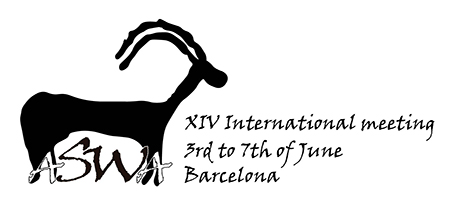In the Jordan Valley where a rich human record reflects the occupation of the area through the Pleistocene, the Nahal Mahanayeem Outlet (Middle Paleolithic, 65,000 BP) open air site is unique by its short term occupation and preservation. It was deposited in a dynamic waterlogged environment. Complete elements were uncovered, that required immediate on site conservation treatment as cracking and splitting occurred immediately with the exposure. However the bones remained fragile but complete. Thus we can actually characterize the size, morphological traits and species differences based on complete bones. Apparently, in the southern Levantine Middle Paleolithic record this is a very rare case.
Crabs, fish, birds, amphibians and reptiles, rodents were uncovered from the site. Thus the environment can be reconstructed in great detail. Among the mammalians, aurochs, rhinoceros, wild pig, fallow deer and gazelle are common. Both testudines species freshwater turtle and tortoise were exploited, being the earliest evidences of butchering of freshwater turtle at a Levantine Paleolithic site.
Aurochs are quite common in Middle Paleolithic assemblages in particular in open air sites, but not merely. Rhinoceros frequencies fluctuate. Both species appear in most sites in the southern Levant. Being the largest in the faunal record (more than one tone in weight), they require specific modes of retrieval and exploitation. When uncovered in the sites elements of both species are quite fragmented, limiting a reliable reconstruction of the species size and morphology. Moreover long bone splinters might be lumped in the same body size category, or ignored altogether, when species identification is impossible. Thus we lack a complete comprehensive of the relation between the Middle Paleolithic hunter-gatherer and the large beasts of his time – the aurochs and the rhinoceros. On a broader scale, a local base line of the aurochs can be build to serve for comparison to latter periods changes on species selection, over hunting and even domestication.
The stone tools are relatively few and composed of "hunter tool kit". Yet again, we should challenge the mode of animal exploitation at the site, and examine if every species reflect the same depositional history. Detailed taphonomy procedure coupled with spatial distribution is applied to face this challenge.

 PDF version
PDF version
